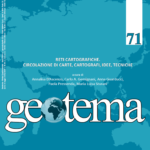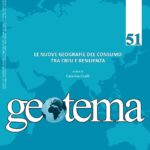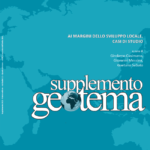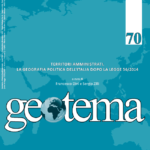Orietta Selva
Alle origini degli «atlanti tascabili»: un intreccio di reti e relazioni
A partire dalla fine del XVI secolo, i Paesi Bassi vedono la nascita e la diffusione di una nuova tipologia di atlanti in forma ridotta, meglio conosciuti come Epitomi. A differenza del Theatrum orteliano e dell’Atlas mercatoriano – presenti nelle dimore delle classi più benestanti, tra cui sovrani e politici, sulle scrivanie di commercianti e banchieri, intellettuali e collezionisti – questo inedito genere cartografico si può trovare sulle tavole spoglie dei ceti meno abbienti o tra le mani degli uomini comuni. Una tradizione cartografica quella fiamminga che va assumendo in un momento storico ricco di novità e rivoluzioni contorni via via sempre più ampi e precisi, non fermandosi solo alla produzione di atlanti in folio, ma iniziando ad adeguarsi all’eterogeneità di un pubblico più vasto e interessato a conoscere il mondo. Così nel Seicento si affacciano sul mercato nuove «edizioni ridotte», stampate numerose volte, in svariate lingue e con titoli diversi che oggi possiamo ritenere progenitrici delle moderne guide turistiche. L’intento principale di questa ricerca è quello di comprendere più a fondo i meccanismi che si celano dietro alla rapida diffusione di questi atlanti tascabili e alle comunità di pratica che si vengono a creare permettendo la circolazione di tecniche cartografiche, competenze incisorie, ma anche di valori e idee che guardano al futuro.
The genesis of «pocket atlases»: a fabric of networks and relationships
Since the end of the 16th century, the Netherlands have witnessed the birth and spread of a new kind of atlases which appear in a reduced format, better known as Epitomi. Unlike Ortelio’s Theatrum and Mercator’s Atlas – which are present in the wealthy dwellings of monarchs and politicians, on the desks of merchants and bankers, scholars and collectors – the latest cartographic genre can be found on the bare tables of the lower classes and in the hands of ordinary men. During a historical period characterized by innovations and revolutions, the Flemish cartographic tradition has been expanding, becoming more and more accurate, going beyond the production of folio-sized atlases and starting to answer the requests of a broad and diverse public interested in discovering the world. Hence, during the 17th century, the publishing industry welcomes new «reduced editions» – reprinted several times, translated into different languages and with different titles – which today could be considered the ancestors of modern travel guidebooks. The main goal of the research is to better understand the mechanisms which lie behind the rapid spread of these pocket atlases and the communities of practice which come to life, allowing the circulation of cartographic techniques, engraving skills, but also values and ideas which look out towards the future.
Parole chiave: atlanti tascabili, Paesi Bassi, XVI-XVII secolo, reti di cartografi
Keywords: pocket atlases, Netherlands, 16th-17th century, cartographers’ networks









